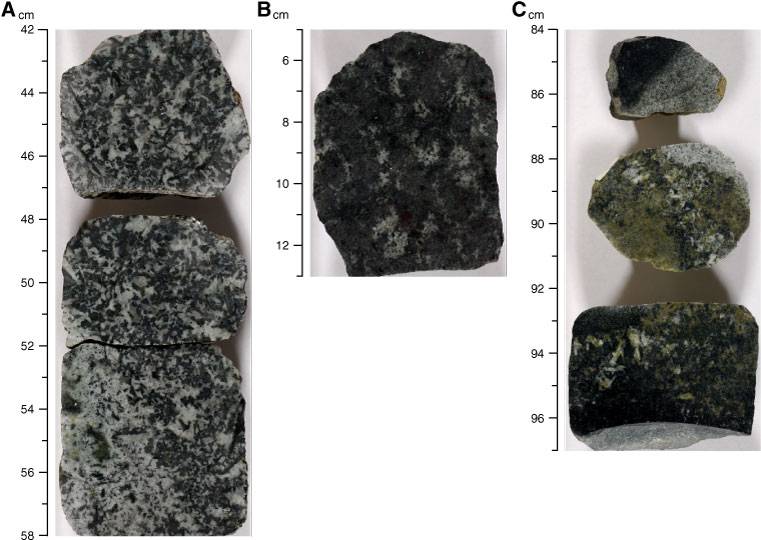
Figure F284. Gabbroic and related rocks from the plutonic section of Hole 1256D. A. Medium- to coarse-grained quartz-rich oxide diorite (Unit 1256D-82; interval 312-1256D-214R-1, 42–58 cm). Rock is moderately to completely altered with actinolitic hornblende replacing the main mafic mineral and plagioclase highly replaced by secondary plagioclase, epidote, chlorite, and actinolitic hornblende, giving the feldspars a teal hue around their rims. Epidote occurs in ~5 mm clots in the finer grained leucocratic portions of the rock. B. Medium-grained disseminated oxide gabbro moderately to highly altered (Unit 1256D-85) with clinopyroxene altered to actinolitic hornblende and plagioclase to secondary plagioclase + actinolitic hornblende (interval 312-1256D-214R-3, 5–13 cm). Alteration is more advanced in the coarser grained areas. Ophitic clinopyroxene and plagioclase chadacrysts are relatively fresh. 1–5 mm black patches with bright red spots are altered olivine or orthopyroxene. C. Completely hydrothermally altered contact between fine-grained basalt (Unit 1256D-90a) and thin dikes of trondhjemite (Unit 1256D-90c) and medium-grained gabbro (Unit 1256D-90d; interval 312-1256D-227R-1, 84–97 cm). The basalt is completely altered to chlorite + quartz, whereas the coarser grained rocks are replaced by epidote + quartz + titanite. (Continued on next page.)

Previous | Close | Next | Top of page